
Review of Pemphigus Foliaceus in Dogs and Cats
Pemphigus is a potentially life-threatening, autoimmune blistering disease characterized by the presence of circulating antibodies against desmogleins, key components of the integrity of epidermal intercellular adhesion. However, in contrast to pemphigus vulgaris (PV) where mucosal lesions are classically present, pemphigus foliaceus (PF) there is only skin involvement without mucosal lesions.

Pre/ Post Gallery in Lacey, WA Dermatology Clinic for Animals
1. Pemphigus Foliaceus Canine pemphigus encompasses four variants: pemphigus foliaceus, pemphigus vulgaris, pemphigus vegetans and paraneoplastic pemphigus. Pemphigus foliaceus is the most common variant and also the most common autoimmune skin disease affecting dogs and cats. Pathomechanism
Generalized pemphigus foliaceus dog
Pemphigus foliaceus (PF) is the most common autoimmune disease in dogs. It is characterized by pustules, ulcers and crusts (scabs) developing on the canine's skin surface. Symptoms of Pemphigus Foliaceus in Dogs Redness Blisters Pus Yellow-brown crust (scabs) Depression Lethargy Fever Sometimes itchy Hair loss Ulcers Lack of appetite

TCVM for Treating Autoimmune Skin Diseases Today's Veterinary Practice
Pemphigus foliaceus (PF) is the most common autoimmune skin disease in dogs and cats. It is also the most common variant of pemphigus diseases,1,2 which are characterized by autoantibodies that target keratinocyte desmosomal proteins, leading to loss of cell-to-cell adhesion (acantholysis).
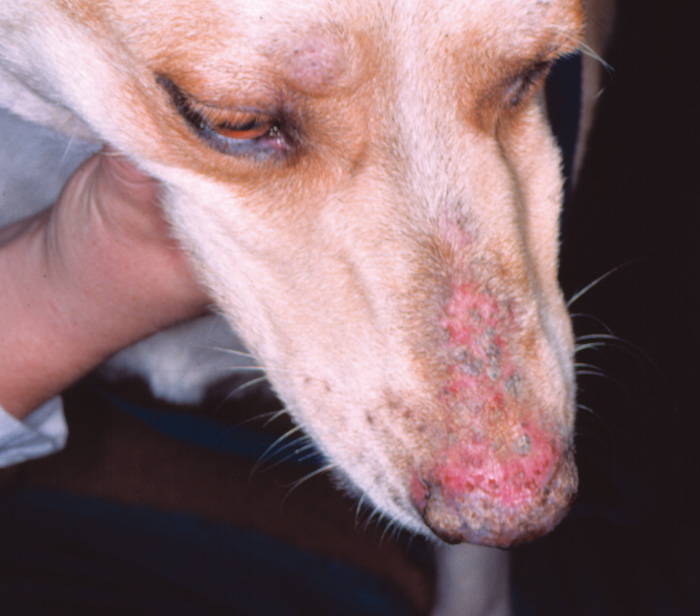
Le pemphigus foliacé chez le chien et chez le chat Le Point Vétérinaire n° 233 du 01/03/2003
Pemphigus foliaceus (PF) is the most common autoimmune skin disease in dogs and cats. It is also the most common variant of pemphigus diseases,1,2 which are characterized by autoantibodies that target keratinocyte desmosomal proteins, leading to loss of cell-to-cell adhesion (acantholysis). Acantholysis of keratinocytes causes separation and.

Pemphigus Foliaceus Dog
Pemphigus is a group of autoimmune skin diseases that can be found in humans, cats, dogs, and even horses. There are three main types, all of which affect the skin: Pemphigus Vulgaris (PV). The first to ever be described in veterinary medicine in 1989, and the most severe.

Review of Pemphigus Foliaceus in Dogs and Cats
Pemphigus foliaceus is a severe skin disease that is characterized by pustules and blisters that rupture, causing damage to the skin of the face, ears, feet and eventually the entire skin in dogs. Pemphigus Foliaceus in dogs is commonly shortened and referred to as just "Pemphigus". This disease results when the animal recognizes a specific.

How to Recognize Autoimmune Skin Disease Tips for Spotting Pemphigus Foliaceus
Pemphigus in Dogs Estimated Reading Time: 4 minutes Pemphigus can best be described as an immune-mediated skin disease in dogs where a dog's own immune system begins to attack the connection between the normal layers of skin cells. There are different types of pemphigus that involve different areas of the skin.

How to Recognize Autoimmune Skin Disease Tips for Spotting Pemphigus Foliaceus
Pemphigus Foliaceus is an autoimmune vesicobullous to pustular skin disease in dogs characterized by acantholysis or loss of adhesion between keratinocytes within the epidermis and hair follicles. The disease is characterized by production of autoantibodies against intercellular connections of the keratinocytes.

Disease facts pemphigus foliaceus in the dog and cat Companion Animal
Bizikova P, Olivry T (2015) Oral glucocorticoid pulse therapy for induction of treatment of canine pemphigus foliaceus - a comparative study. Vet Derm 26, 354 PubMed. Bizikova P, Linder K E, Olivry T (2014) Fipronil-amitraz-S-methoprene-triggered pemphigus foliaceus in 21 dogs: clinical, histological and immunological characteristics.
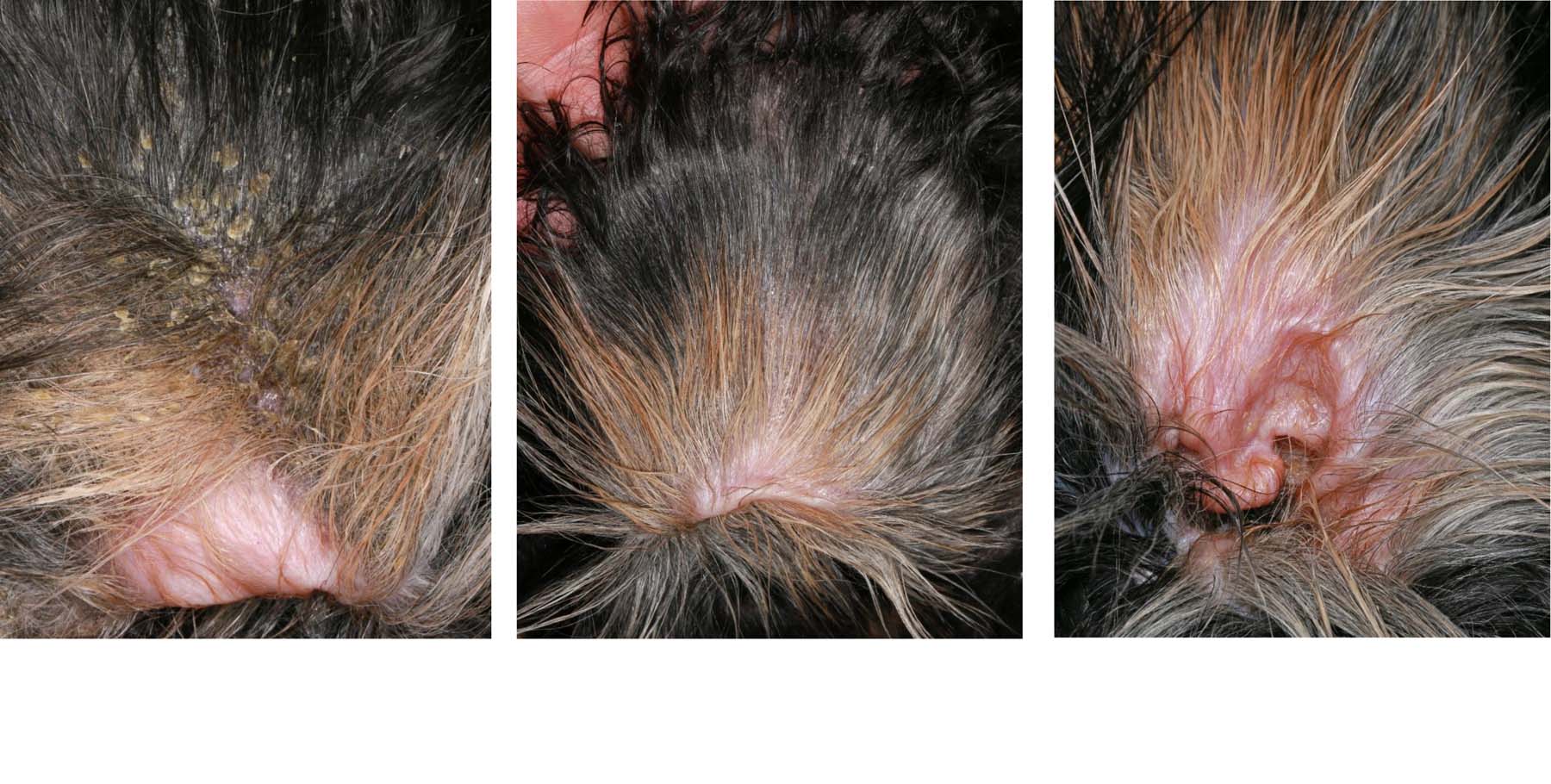
Pemphigus Foliaceus The Skin Vet
Canine Pemphigus Foliaceus. Pemphigus foliaceus, the most common autoimmune dermatosis in dogs, presents with primary large, superficial pustules. Pustules may be punctate or span multiple follicles, and contents may appear translucent to yellow ( Figure 1). Because they are thin-roofed, pustules tend to rapidly rupture and form crusts with.

canine pemphigus foliaceus canine pemphigus foliaceus Page 3
Pemphigus in dogs is an autoimmune condition of the skin. Pemphigus causes the connections between a dog's skin cells to break down.. Pemphigus foliaceus usually appears on the head, face, and ears with symmetrical lesions on both sides of the head. A dog's footpads are often affected as well. The trunk of their body is sometimes.
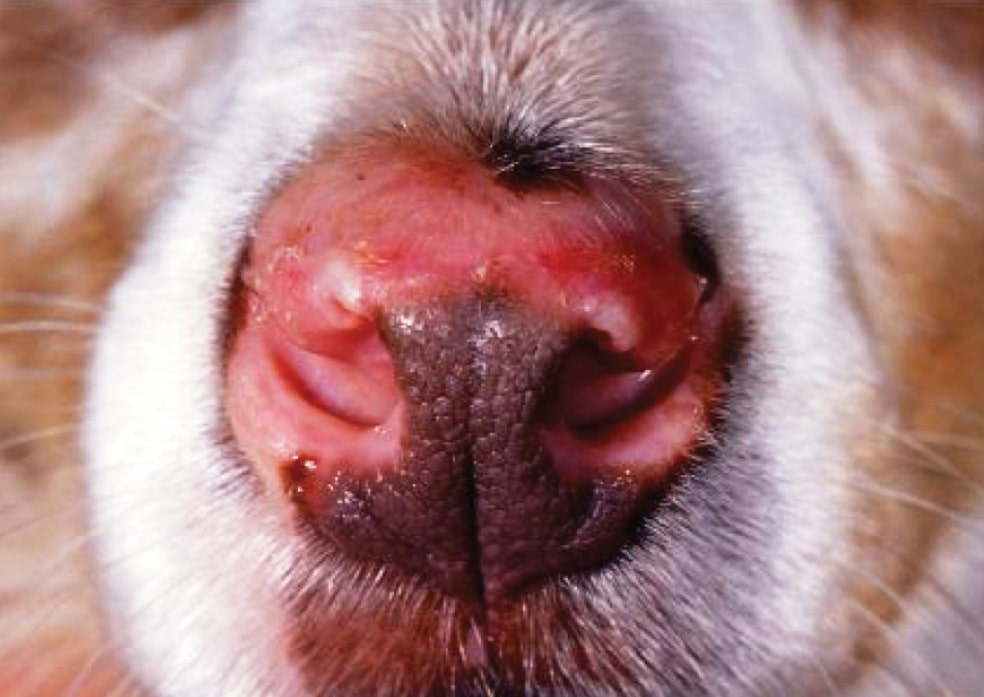
How to Recognize Autoimmune Skin Disease Tips for Spotting Pemphigus Foliaceus
Pemphigus Foliaceus - Pemphigus foliaceus is the most common autoimmune skin disease in dogs and cats. It is often observed in middle-aged and older patients. Pemphigus foliaceus typically causes hair loss, scabs, and ulcers (open sores) around the head, face and ears.
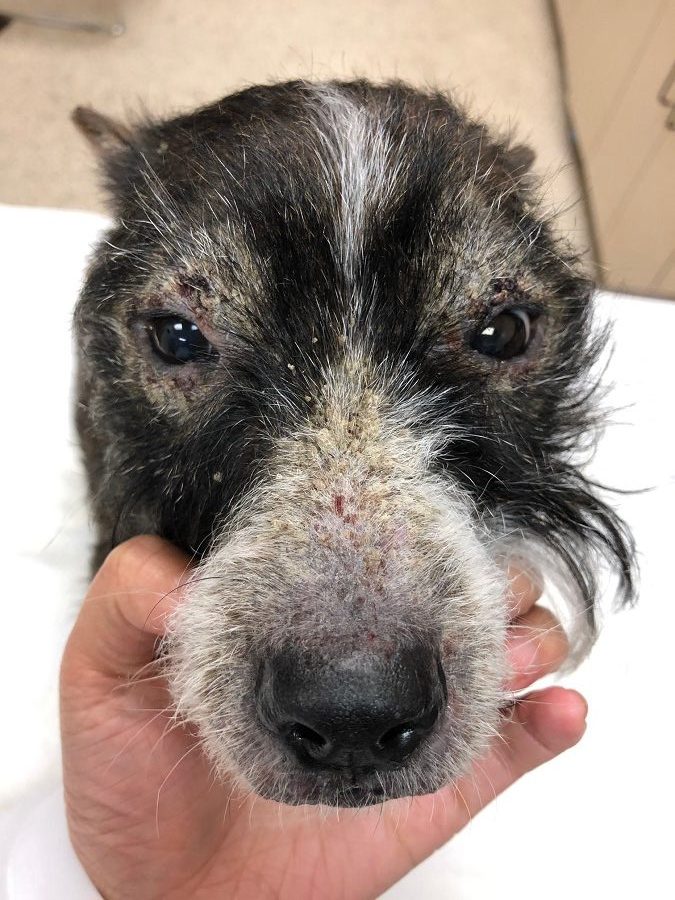
Pet Case Study Rocky’s Pemphigus Animal Dermatology Referral Clinic (ADRC)
Key words: Pemphigus, crusting, canine, auto-immune, dog Diagnosis and management of pemphigus foliaceus in dogs For Dermatology Referrals in your area: vetindex.co.uk/derm For Lab Tests and Equipment: vetindex.co.uk/Lab Market your referrals in VetIndex! For further information call us on 01225 445561 or e-mail: [email protected] Introduction.
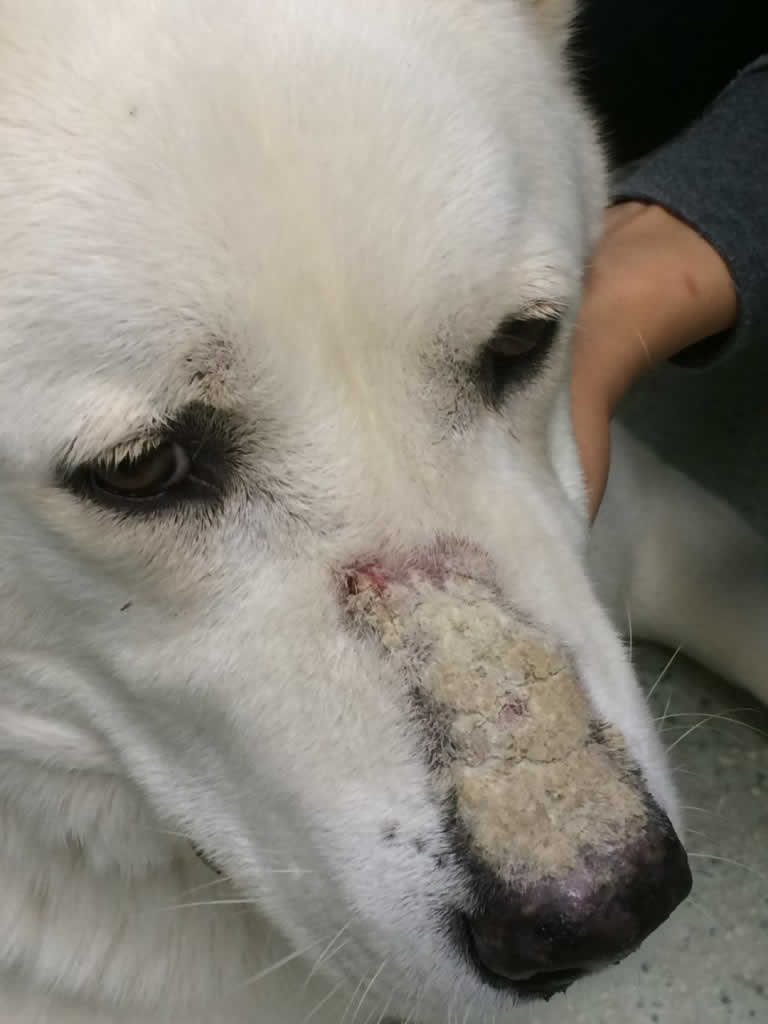
Skin Veterinary Skin Specialist Veterinary Dermatology
Pemphigus foliaceus (PF or simply pemphigus) is one of the more common autoimmune blistering skin diseases in referral practice, yet the prevalence of PF as reported in the literature is less than 2% for dogs and likely less than 1% in feline patients seen in tertiary referral practices.
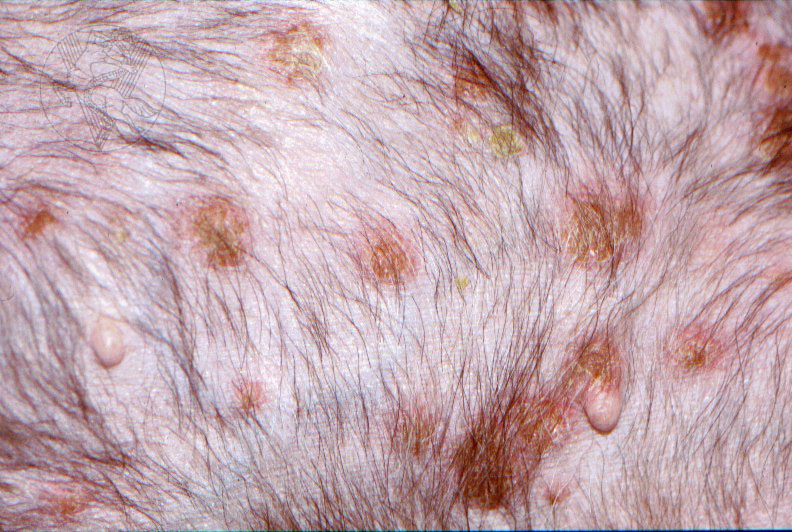
Generalized pemphigus foliaceus dog
Pemphigus foliaceous is the most common autoimmune disease in dogs and is most often caused by autoantibodies targeting desmocollin-1 ( 2, 3 ). Go to: Clinical presentation The classical lesions of pemphigus foliaceous are large pustules that span multiple hair follicles ( 1, 4 ).